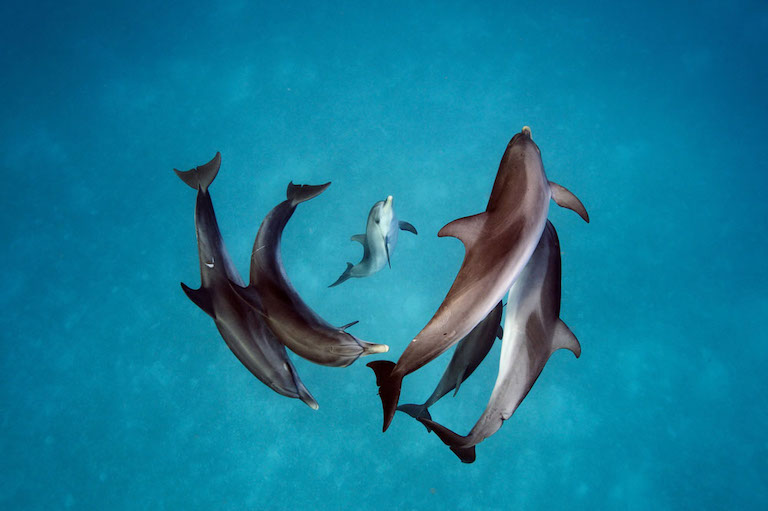- Mongabay contacted award-winning photographer and former war correspondent Ami Vitale to hear her thoughts about the power of photography at this pivotal time in places like Ukraine.
- In a new interview, Vitale shares her views and also news of a photography sale that she and other National Geographic photographers have donated prints to, toward providing relief to victims of the war.
- “Photography can remind us all that we have a lot more in common than we often realize. If we…dig beneath the headlines and take the time to understand, a universal truth emerges. We are all connected to one another,” she says.
- Photos from the print sale are available until May 10th.
Award-winning National Geographic photographer Ami Vitale recently made a short film called Shaba about a young elephant rescued by the Reteti Elephant Sanctuary, which is owned and operated by an Indigenous Samburu community in Kenya.
It’s a fine example of how she weaves method and mission together, and that latter word is very apt: Vitale is always on a mission to uplift people and wildlife, and recently invited Geographic colleagues to donate some of their iconic work for sale to provide humanitarian aid to people affected by conflicts like in Ukraine: 100% of the profits from this initiative will be donated to Direct Relief, an organization providing aid to people affected by these conflicts.
Mongabay caught up with Vitale to hear her thoughts about photography at this pivotal time: her responses have been edited lightly for clarity.
Mongabay: The most powerful photography of 2022 is coming out of Ukraine: you’ve spent plenty of time in conflict zones documenting similar events, how does this war inform how you think about the state of the world?
Ami Vitale: Every single war and the senseless violence that comes with them are unconscionable. We are all intricately connected to one another whether we understand it or not. This war is about all of us, our lives, homes and our future. It’s about how deeply connected we are to each other. I believe now is the time to channel our grief into action and find the courage to make a difference. We can all be catalysts to start a whole chain reaction that will stop these horrors and change this current trajectory that we are on.

Mongabay: What brought you out of direct conflict zones and into conservation-related photography – are these related at all?
Ami Vitale: After a decade of covering wars, I realized a profound truth. Every single story of humanity is always dependent on nature for its outcome. I had been telling stories about war, people and the human condition but the backdrop of each and every one of these stories was the natural world. In some cases, it was the scarcity of basic resources like water. In others, it was the changing climate and loss of fertile lands but always it was the demands placed on our ecosystem that drove conflict and human suffering. Today, I use nature as the foil to talk about our home, our future and where we are going.
Mongabay: What role can photography play in conflict and in peace?
Ami Vitale: Photography can remind us all that we have a lot more in common than we often realize. If we take the time to lift that veil then we give our audience a broader vision of what the world really looks like, dig beneath the headlines and take the time to understand, a universal truth emerges. We are all connected to one another.

Mongabay: Your team at Vital Impacts is partnering with other National Geographic photographers to launch a print sale to leverage the power of photography, how can this directly help people caught in conflicts like Ukraine?
Ami Vitale: We are partnering with photographers at National Geographic who are friends and colleagues and deeply committed to this cause. I chose to ask them because I knew their work is iconic and diverse and will appeal to a wide range of interests.
We can all watch the horrors of the world from afar and feel so helpless but this is a way to support humanitarian efforts and have a unique opportunity to purchase some of the most memorable fine art prints from the world’s leading photographers. The hope is that this work will inspire everyone who sees it to work for a world of peace and compassion.

Mongabay: Your film Shaba revealed an Indigenous community using creativity, optimism and grit in protecting young orphaned elephants in Kenya – what is fueling your own optimism lately?
Ami Vitale: We cannot afford to view the world through an optic of fear and hate because if we only tell stories through our own paradigm of values, we justify the existing divisions in our world. What connects us is more powerful than what divides us.
There are so many projects and people that inspire hope and optimism if we look for them. Right now, I am working in Kenya with 40 grassroots conservationists to share some visual storytelling skills and tools so they can do more to amplify their own incredible work. It’s the first few days but tune into @wild.lifeincolour on Instagram to see more of their work and get engaged with them.
Shaba is another film project I made about the first community-owned and run elephant sanctuary, in a remote part of northern Kenya that is working to protect the wildlife around them. I am so honored to have been able to amplify their beautiful stories and hope this short film can continue to raise much needed funding for them.
See more photos available until May 10th via Vital Impact’s print sale here.
Erik Hoffner is a photographer and an editor for Mongabay, see his latest work on Twitter via @erikhoffner.
Banner image: Rhino and keeper, courtesy of Ami Vitale.
Related audio from Mongabay’s podcast: Hear Vitale discuss her documentary film “Shaba” during a recent episode, listen here:

